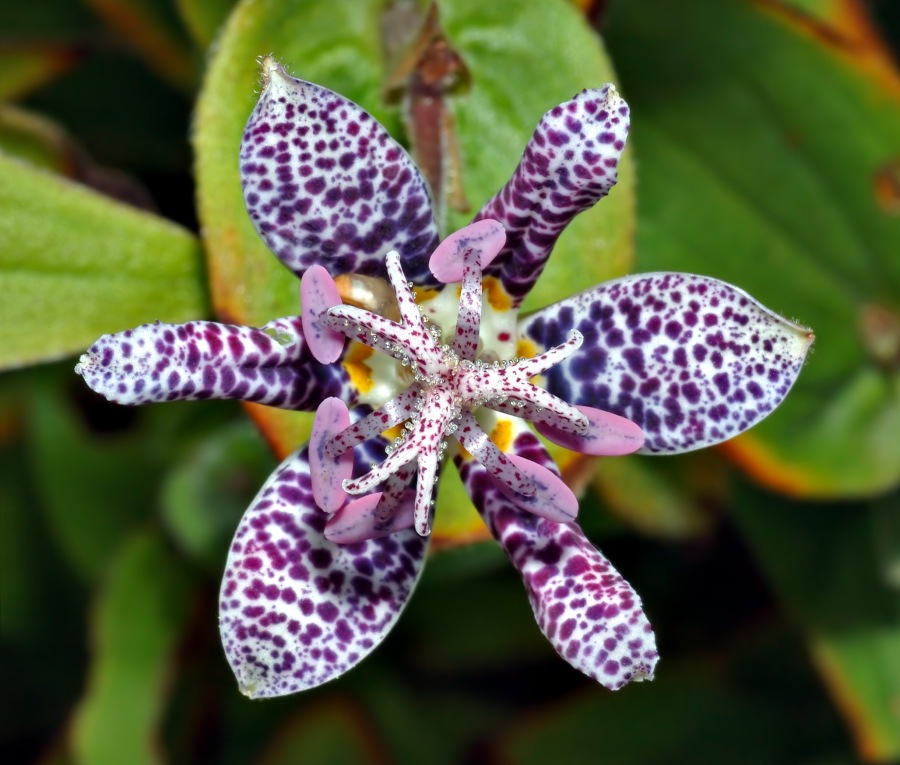The temple gardens of Japan are renowned throughout the world for their raked gravel, well placed rocks, and no plants. At least, very few. Such occasional plants are placed strategically, singly, designed to engage the visitor with their enigmatic immediacy.
Each plant is native: cherry, chrysanthemum, wisteria; it is symbolic; and it celebrates a season.
Tricyrtis is just such a plant. The Toad Lily, to use its English common name, is called ‘hototogisu’ in Japanese, an onomatopoeic word for the cuckoo whose spotted chest the flower is thought to resemble. But it is the delicacy and complexity of the flower structure that appealed to the Zen monks who made the temple gardens. They found in it a metaphor for life itself. And in Zen poetry, ‘haiku’, the tricyrtis indicates the late summer whose days are shortening into autumn.
And here, in northern Europe, these Japanese tricyrtis flower during that long lean gap in any shady garden between the last of the foxgloves and astrantias, and the first of the snowdrops and hellebores. It accompanies Hydrangea serrata, Japanese anemones and soft lush ferns from August to October, and merits a position close to the path, the better to examine the flowers more closely.
And what intricate flowers they are! From fat, flat-bottomed buds a ruff of six petals opens, in some species spotted, in others plain. The reproductive parts of the flower, the stamens and the stigma, are supported on an elongated style above the level of the petals. When the flower is pollinated, the whole corolla drops away leaving a shining green seed capsule the same shape as the bud.
The most commonly grown tricyrtis in this country, T.formosana stolonifera, the ‘Toad Lily’, is, however, native to Taiwan. There it spreads by the roots in moist, loose, leafy soil in light shade. It has typical spotted flowers, and is easy to grow in the right conditions. Tricyrtis hirta grows wild on shady rocks in the wooded mountains of Japan, arching down to present its paler, spotted flowers over light green, slightly hairy leaves. And Japan is home to many other species of tricyrtis, among them T.macropoda with recurved white flowers and pink spots. This plant is called ‘yama-hototogisu’ in Japanese, the ‘mountain tricyrtis’.
There are some golden yellow species that are also worth seeking out from the specialist nurseries. Tricyrtis latifolia has, as its name suggests, leaves as wide as saucers, setting off yellow flowers that are speckled chestnut brown. It would trail prettily down a shady bank or over rocks or down a wall.
So try a few tricyrtis under a light tree canopy where the soil keeps its moisture without getting boggy. Dot a few, discreet, slug-pubs about. Slugs and snails are lager-louts: they prefer beer to beauty.
And you too will surely get hooked on toads, or should that be cuckoos?
Sally Gregson
September 2019

